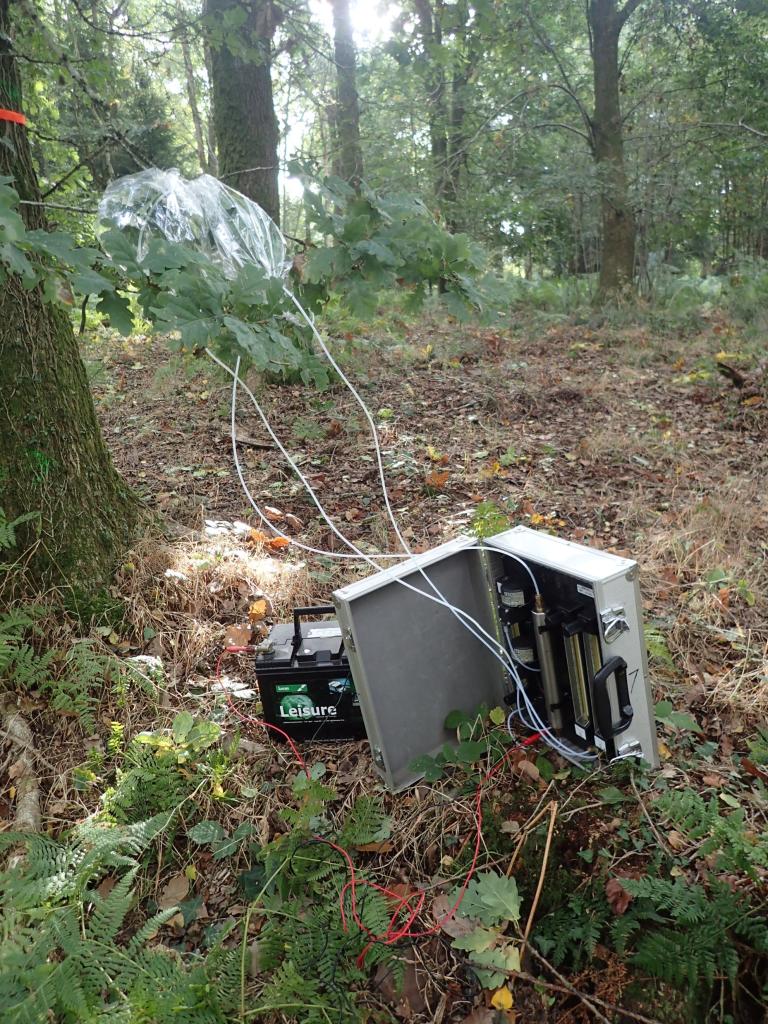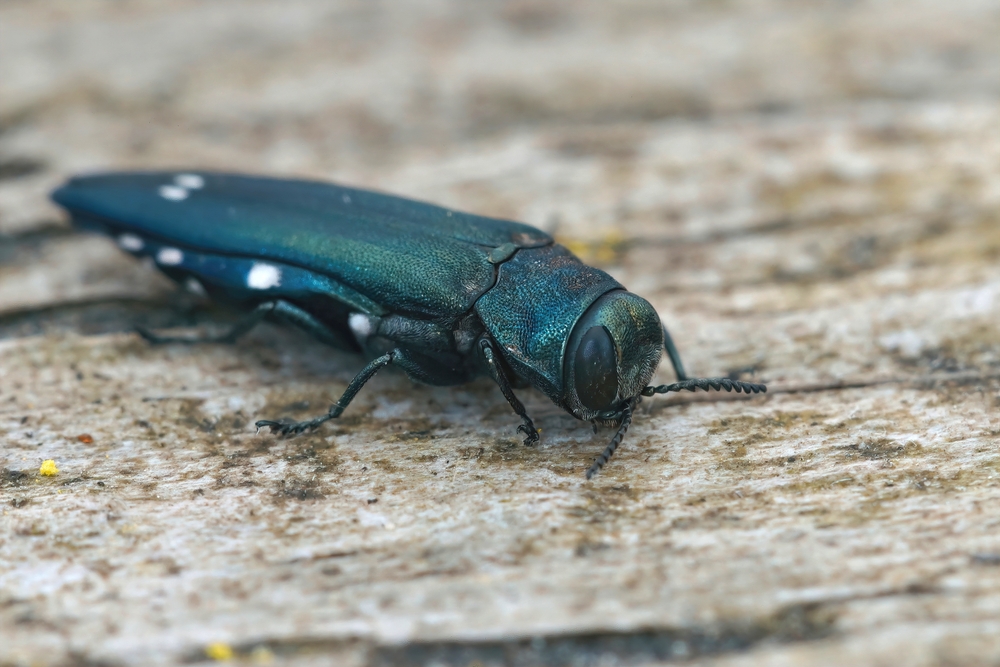The big picture: using wildflower strips for pest control
The deadly decline of Britain’s native oak trees may be driven by an unexpected accomplice: their own smell.
Scientists have discovered that trees affected by Acute Oak Decline (AOD) emit distinct odours that are highly attractive to the oak splendour beetle Agrilus biguttatus, a key contributor to the decline. The findings suggest that beetles use chemical cues in these odours — emitted by infected leaves and the bacteria involved in AOD — to locate ideal sites to lay their eggs.
The study, published this week in Current Biology, sheds new light on the complex interplay between trees, microbes and insects in one of the UK’s most concerning woodland health crises.
AOD is a fast-progressing condition affecting thousands of mature oaks across England and Wales. It is characterised by dark, weeping lesions on tree trunks and the presence of larval galleries from A. biguttatus, a jewel beetle whose larvae burrow through the tree’s inner bark, disrupting nutrient flow.
Researchers found that female beetles were strongly attracted to airborne chemicals produced by infected oak leaves and by two bacterium species central to AOD: Brenneria goodwinii and Gibbsiella quercinecans. The effect was even more pronounced when the scent of the bacteria was combined with scents from oak bark.
The beetles are essentially using the scent of illness — from both the tree and the bacteria — as a beacon.
Crucially, scientists identified three specific chemical compounds within the odour emitted by the bacteria, two of which are entirely new to science. These natural products appear to serve as olfactory cues, helping the beetles zero in on stressed and susceptible trees, although they do not directly trigger egg-laying behaviour.

Dr Jozsef Vuts, who led the study, said: “What we’re seeing is a sophisticated chemical signalling system. The beetles are essentially using the scent of illness — from both the tree and the bacteria — as a beacon. It’s a remarkable example of how insects can exploit microbial activity to guide their behaviour.”
The team’s findings point to a possible feedback loop in which the beetles are drawn to declining trees already infected by AOD bacteria, facilitating further damage as their larvae open new pathways for infection and decay.

Understanding this chemical dialogue could open the door to novel management strategies. By developing beetle traps based on synthetic versions of these odour compounds, or sensors that can detect the compounds, foresters may be able to monitor or even slow the spread of AOD in vulnerable woodlands.
More than 120,000 trees are estimated to be affected by AOD in the UK, many in ancient or ecologically important forests. As climate change places further stress on native species, the need for innovative approaches to forest health has become increasingly urgent.
“This research provides a new piece of the puzzle,” co-author Dr John Caulfield added. “If we can interfere with the beetle’s ability to detect infected trees, we might be able to tip the balance back in favour of the oaks.”

Chemical Ecologist

Analytical Chemist - Mass Spectrometist - Chemical Ecologist
Rothamsted Research is the longest-running agricultural research institute in the world. We work from gene to field with a proud history of ground-breaking
discoveries in areas as diverse as crop management, statistical interpretation and soil health. Our founders, in 1843, were the pioneers of modern
agriculture, and we are known for our imaginative science and our collaborative approach to developing innovative farm practice.
Through independent research, we make significant contributions to improving agri-food systems in the UK and internationally, with
economic impact estimated to exceed £3 bn in annual contribution to the UK economy. Our strength lies in our systems approach, which combines strategic research,
interdisciplinary teams and multiple partnerships.
Rothamsted is home to three unique National Bioscience Research Infrastructures which are open to researchers from all over the world:
The Long-Term Experiments,
Rothamsted Insect Survey and the
North Wyke Farm Platform.
We are strategically funded by the Biotechnology and Biological Sciences Research Council (BBSRC), with additional support from other national and
international funding streams, and from industry. We are also supported by the Lawes Agricultural Trust (LAT).
The Biotechnology and Biological Sciences Research Council is part of UK Research and Innovation, a non-departmental public body funded by a grant-in-aid
from the UK government.
BBSRC invests to push back the frontiers of biology and deliver a healthy, prosperous and sustainable future. Through our investments, we build and support a vibrant,
dynamic and inclusive community which delivers ground-breaking discoveries and develops bio-based solutions that contribute to tackling global challenges,
such as sustainable food production, climate change, and healthy ageing.
As part of UK Research and Innovation (UKRI), we not only play a pivotal role in fostering connections that enable the UK’s world-class research and innovation system
to flourish – we also have a responsibility to enable the creation of a research culture that is diverse, resilient, and engaged.
BBSRC proudly forges interdisciplinary collaborations where excellent bioscience has a fundamental role. We pioneer approaches that enhance the equality, diversity,
and inclusion of talent by investing in people, infrastructure, technologies, and partnerships on a global scale.
The Lawes Agricultural Trust, established in 1889 by Sir John Bennet Lawes, supports Rothamsted Research’s national and international agricultural science through the provision of land, facilities and funding. LAT, a charitable trust, owns the estates at Harpenden and Broom's Barn, including many of the buildings used by Rothamsted Research. LAT provides an annual research grant to the Director, accommodation for nearly 200 people, and support for fellowships for young scientists from developing countries. LAT also makes capital grants to help modernise facilities at Rothamsted, or invests in new buildings.